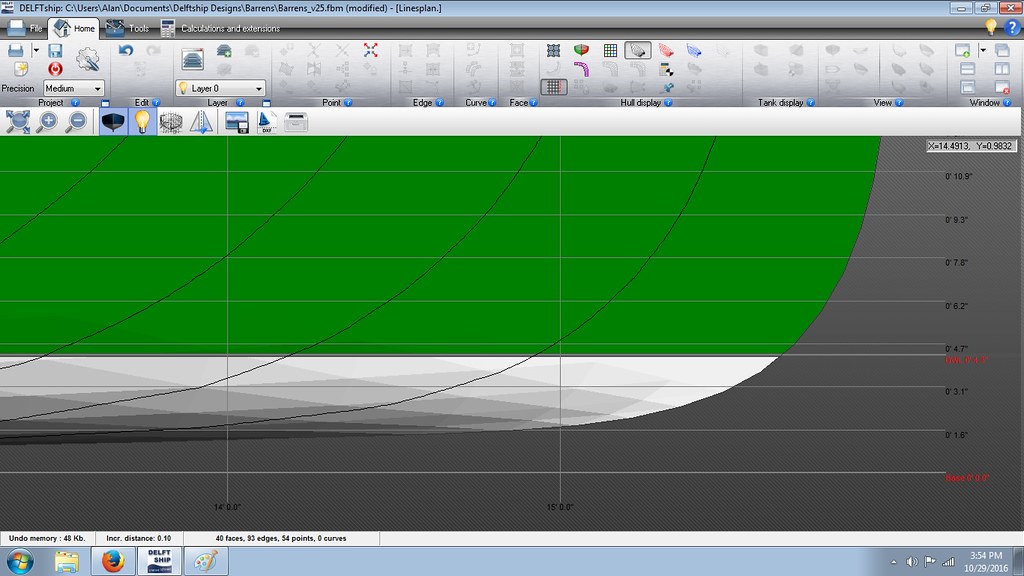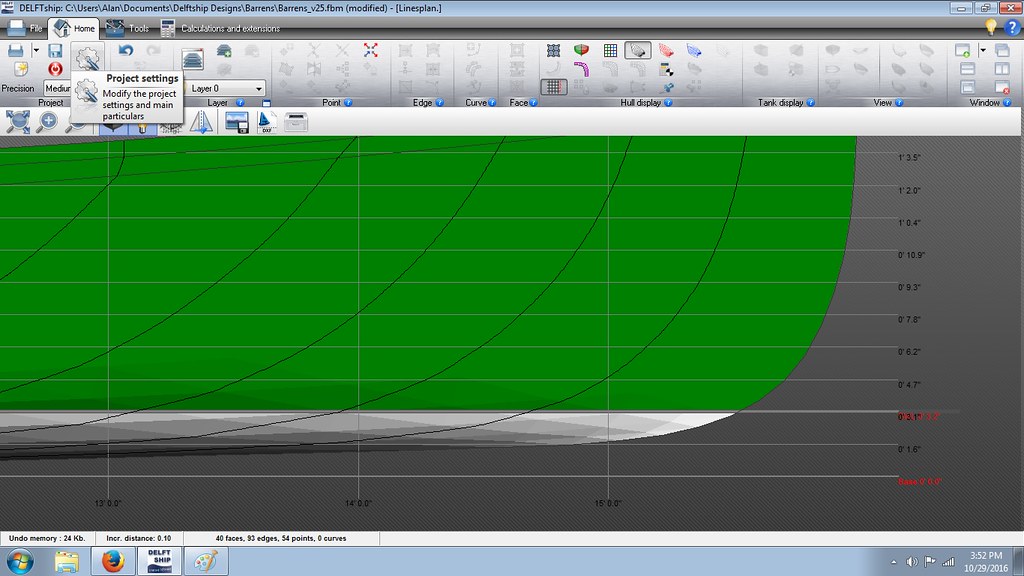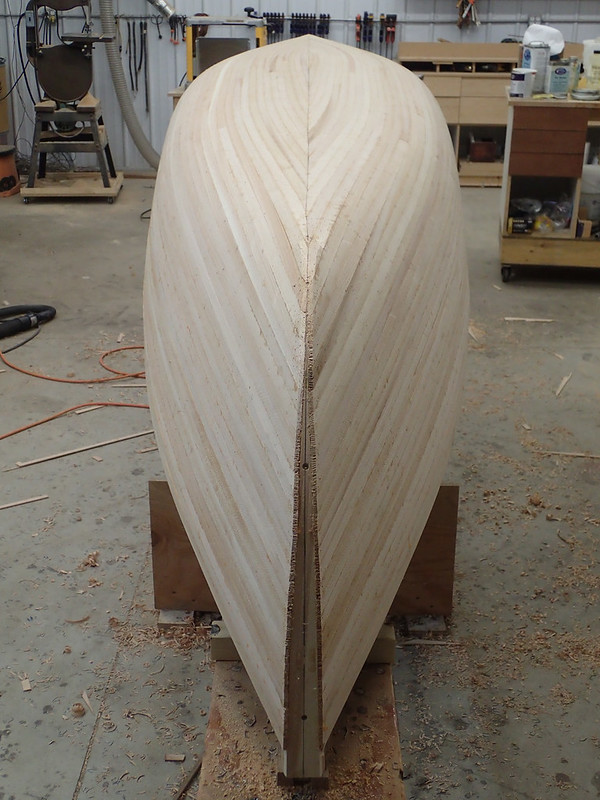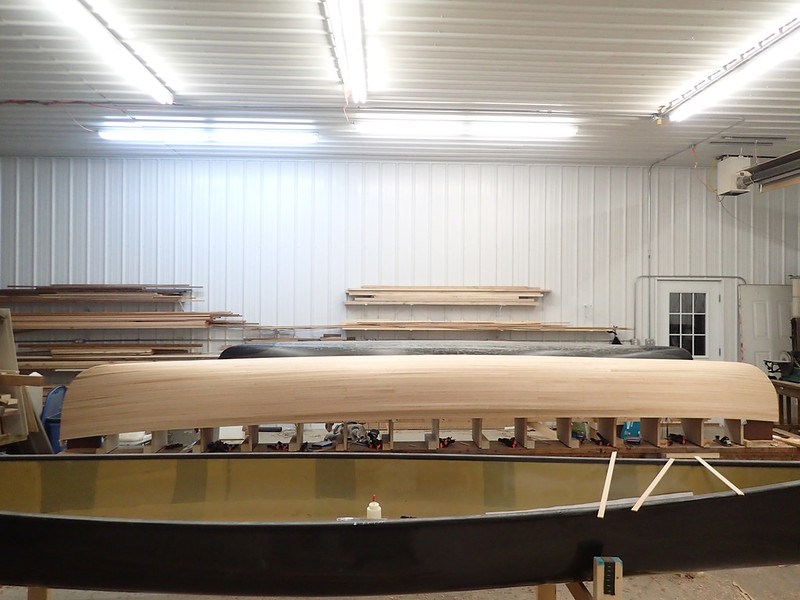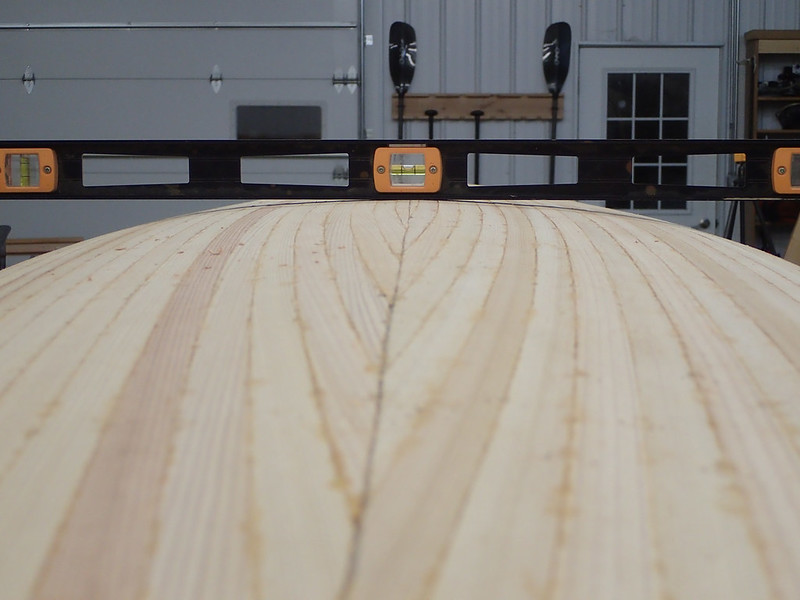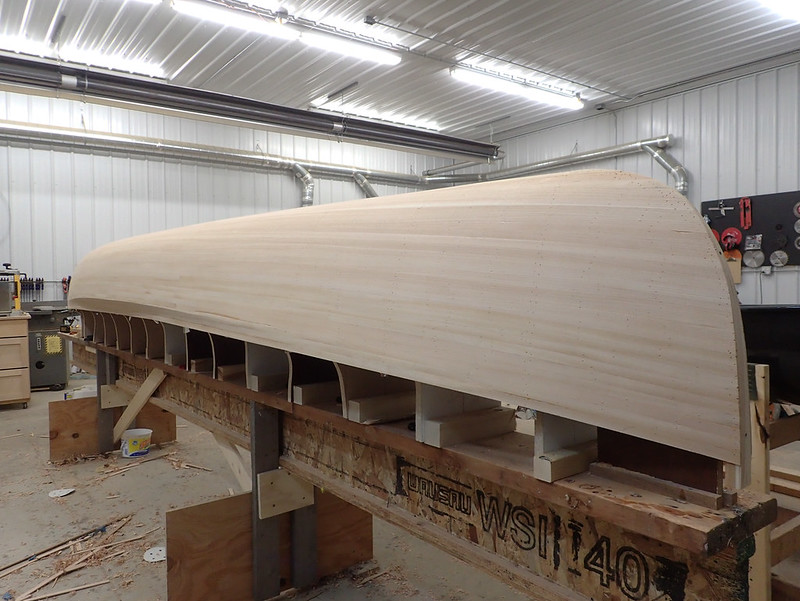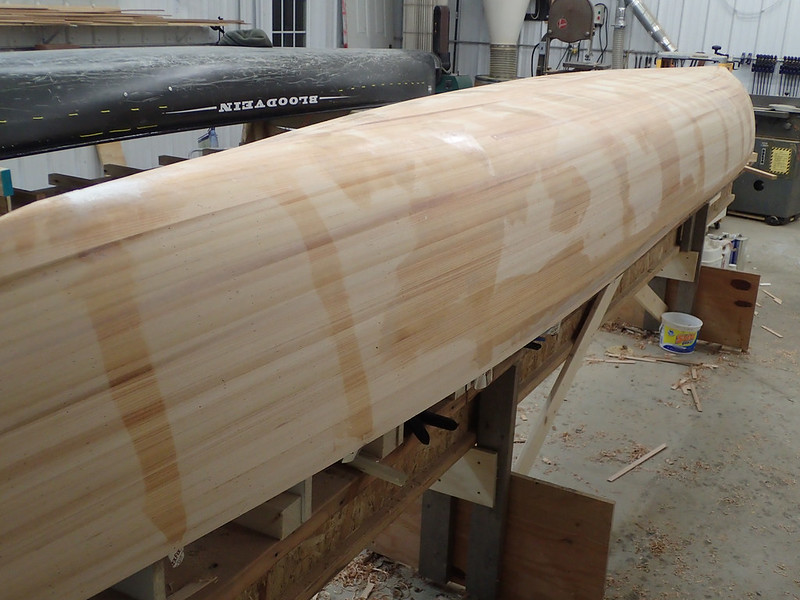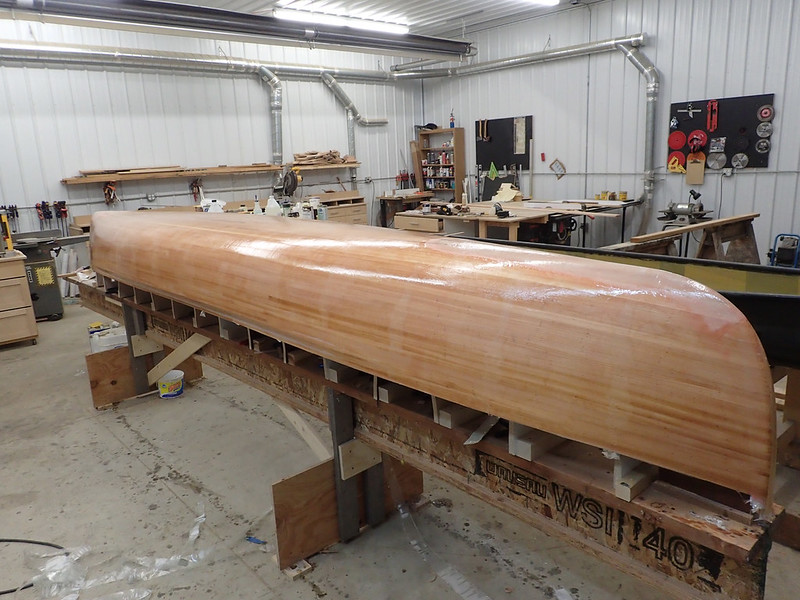I know we've talked some about losing efficiency by adding rocker. Is there a point where the efficiency really drops off ?
And if rockering one end or the other makes more, or less of a difference, at least on the computer model ?
My hulls are pretty straight keeled, and so this intrigues me.
Jim
I hesitate to keep talking about these design considerations too much. Not that I don't enjoy discussing it but I'm afraid people might start to think I know what I'm talking about, which I don't, or else start to think that I think I know what I'm talking about, which I don't. So with that in mind....
I think there are two different efficiency considerations. There's the efficiency that has to do with the hull's resistance as it moves through the water and the efficiency that has to do with how well a hull tracks; and for us mainly straight ahead paddlers a hull that tracks better would feel more efficient. From what I've read, mostly from J. Winters, these two things aren't necessarily related.
Adding rocker means less hull is exposed to the water, which equals less resistance. Less rocker usually means a longer waterline (less resistance at higher speeds) but more of the hull is in contact with the water so a little more drag to overcome at lower speeds.
One of the benefits Winters gives to a differentially rockered hull is that by adding rocker to the bow you're putting fewer square inches in contact with the water without having a large effect on tracking. Looking at the shape of racing kayaks and surf skis you'll see they have tremendous about of stern rocker to cut down on the amount of hull that's in contact with the water. As a result of this they're completely dependent on a rudder to keep them going straight.
When messing around with my designs in Delftship I can definitely see the resistance numbers change as I add and remove rocker and try to find the happy medium. Just where this sweet spot is, to me, varies from design to design depending on how I plan to paddle it.
I'd highly encourage anyone who finds this stuff interesting to spend the $25(?) and buy a copy of John Winters' Shape of the Canoe from Greenval. Then you can get the information from someone who really does know what he's talking about. If you poke around you'll find a few short sections of this work published online but it's nothing compared to the information in the actual book. Well worth the money. I've read it a few times and am due to sit down and read it again. It makes more sense each time.
There's no shopping cart on the site. Just contact Martin, the owner of Greenval, and he'll send you a copy. http://www.greenval.com/TheShapeOfTheCanoe.html
Alan

